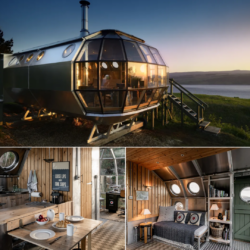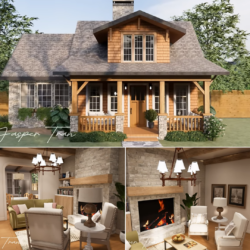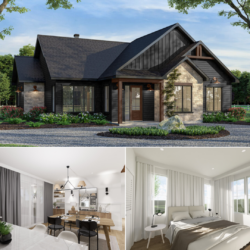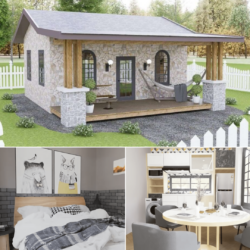
Tiny houses are becoming increasingly popular today, and this trend is widespread in the design world and among those who embrace a sustainable lifestyle. In this article, we will examine a charming tiny house design of 24 square meters. This tiny house offers an example of not only using space most efficiently but also combining aesthetics and functionality.

One of the notable features of this tiny house is that it is furnished with large windows to make the interior feel open and bright. Thanks to the large windows, plenty of natural light can enter and the interior has a more spacious atmosphere. Additionally, thanks to these windows, a connection is established between the natural beauty outside and the interior.

The interior design has been thought out to ensure the best use of every centimeter of space. Dual-function furniture, storage areas, and hidden drawers make living in this tiny house more comfortable. Plus, the open-plan design makes the space feel larger. This design offers the homeowner functionality and aesthetics, as the kitchen, living room, and bedroom areas are fluidly connected.

Warm colors and natural materials were preferred in the interior decoration of the tiny house. While wooden floors and furniture create a warm atmosphere in the house, natural stone details and vegetation add natural balance and peace to the interior. Additionally, various storage areas offer the opportunity to store personal belongings in an orderly manner.

The exterior of the tiny house has also been charmingly considered as part of the design. Natural wood finishes offer the home a mix of modern and rustic. A large private patio serves as the outdoor living area and offers the perfect place to enjoy the view.

Energy Efficiency: High-quality insulation of the house and energy-saving lighting systems minimize energy consumption. This reduces energy bills while minimizing environmental impact.

Solar Energy: Rooftop solar panels offer homeowners the opportunity to generate their electricity. This promotes energy independence and reduces fossil fuel use.

Zero Waste: The design was considered to minimize waste production. Using recyclable materials and choosing water and energy-saving devices contribute to the zero waste goal.

Water Saving: To reduce water use at home, low-flow fixtures and gray water systems designed to recycle water can be used. This helps protect water resources.





